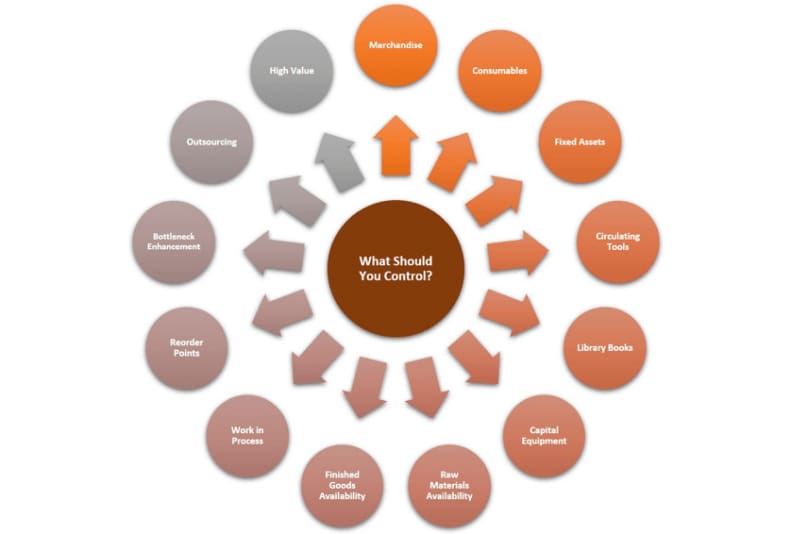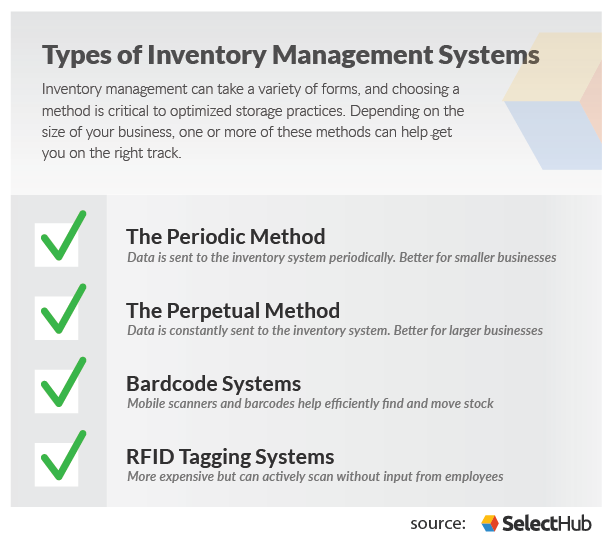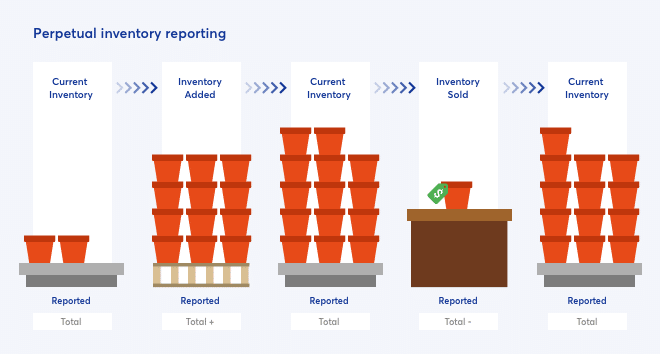How Inventory Management can Save You Time, Stress, and Money.
The Best Guide To Inventory Management
Table of Contents5 Easy Facts About Inventory Management DescribedAn Unbiased View of Inventory ManagementWhat Does Inventory Management Mean?Inventory Management Can Be Fun For Anyone
There are two major methods of monitoring inventory: regular and also perpetual. The main distinction between these is how often information is updated. No matter just how often you track inventory, you might intend to make use of one of the following stock monitoring techniques: ABC Evaluation, ABC (Always Better Control) Evaluation is inventory management that divides various products into 3 classifications based upon rates and is separated into teams A, B, or C.The items in the B category are reasonably cheaper contrasted to the A group. And the C category has the cheapest products of all 3. EOQ Design, Economic Order Quantity is a strategy used for preparation as well as purchasing an order amount. It entails deciding concerning the amount of stock that must be placed in supply at any offered time. Inventory Management.
FSN Approach, This approach of supply control refers to the process of tracking all the products of supply that are not made use of regularly or are not needed at all times. They are then categorized into three various classifications: fast-moving supply, slow-moving inventory, and non-moving supply. JIT Approach, In the nick of time supply control is a process utilized by manufacturers to control their stock levels.

Indicators on Inventory Management You Need To Know
VED Evaluation, VED is a strategy used by organizations to regulate their stock. The high degree of inventory that is required for manufacturing usually justifies the reduced stock for those components.
Wrike is a project management remedy that can aid you do exactly that. With Wrike's item monitoring devices, you can take care of every one of your item team's activities in one place and obtain the most out of every task. Wrike's product launch automation assists increase product launches with a streamlined approach.


The Facts About Inventory Management Revealed
Inventory administration describes the process of purchasing, storing, utilizing, and also my explanation marketing a company's stock. This consists of the monitoring of resources, elements, and ended up products, as well as warehousing and handling of such items. There are different kinds of stock management, each with its pros and cons, relying on a company's requirements.
Stock administration attempts to efficiently simplify inventories to stay clear of both excess as well as shortages. 4 significant supply monitoring methods consist of just-in-time administration (JIT), products requirement preparation (MRP), financial order amount (EOQ), and days sales of inventory (DSI). There are pros and disadvantages to each of the approaches, assessed listed below. A business's stock is just one of its most important properties.
A shortage of inventory when as well as where it's needed can be exceptionally damaging (Inventory Management). At the very same time, inventory can be taken a liability (if not in an accountancy sense). A big inventory lugs the danger of putridity, burglary, damage, or changes in need. Stock needs to be guaranteed, as well as if it is not offered in time it may need to be disposed of at clearance pricesor simply destroyed.
Small organizations will certainly usually keep track of supply by hand and determine the reorder factors as well as quantities utilizing spread sheet (Excel) formulas.
More About Inventory Management
Appropriate stock administration techniques vary depending upon the industry. An oil depot is able to keep large quantities of inventory for extended amount of times, you can try these out enabling it to wait for need to select up. While keeping oil is pricey and also riskya fire in the U.K. in 2005 caused countless pounds in damage as well as finesthere is no threat that the stock will ruin or go out of design.
For firms with intricate supply chains as well as making procedures, balancing the risks of stock excess and scarcities is especially tough. To achieve these equilibriums, firms have actually developed a number of approaches for supply monitoring, including just-in-time (JIT) and products demand planning (MRP). Some business, such as monetary services firms, do not have physical inventory therefore has to depend on service process monitoring.
Supply has to be literally counted or gauged prior to it can be placed on a balance sheet. Business generally preserve sophisticated supply administration systems with the ability of tracking real-time inventory levels. Supply is represented utilizing among 3 techniques: first-in-first-out (FIFO) setting you back; last-in-first-out (LIFO) setting you back; or weighted-average costing. A supply account usually is composed of 4 separate categories: Basic material stand for different materials a business purchases for its manufacturing process.
Operate in process (also known as goods-in-process) represents basic materials in the process of being changed right into a finished item. Completed goods are completed items conveniently available available to a business's consumers. Goods represents ended up items a firm purchases from a supplier for future resale. Depending upon the sort of company or product being evaluated, a firm will make use of different supply management techniques.